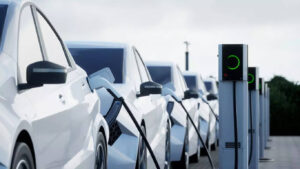
“There is work that is being done on the charging infrastructure. Charging infrastructure needs a lot more work to do and we are also doing some work in that area,” says Ravi Pandit, Chairman, KPIT Technologies.
Can you outline for the benefit of our viewers that how has KPIT benefited because of EVs? How much of your total business is coming from EVs? And do you think EV is not just a fad, it is a real deal?
We believe that EV is not a fad. EV is actually a complete structural change in the auto industry. Now, there are two-three things which are driving growth for a company like us. One is that EV by itself is a change in the powertrain. So, how do you have a new powertrain, whether it is a battery electric or a fuel cell electric and technologies relating to that, so that is one thing which is really purely related to EV as such.
But I think EVs are also starting a complete revolution in the way in which a vehicle is defined, which is now globally called as software-defined vehicle. So, how can you have a vehicle which can be updated online? How can you have a vehicle where you can have a different business model, where you do not sell an equipment but you sell by the hour or by the feature, etc.
So, I think EV is making a big change. EV, of course, contributes to a large percentage of our business and as I said EV is not just pure EV, but all that is initiated or triggered by the electrification of vehicles.
There is work that is being done on the charging infrastructure. Charging infrastructure needs a lot more work to do and we are also doing some work in that area.
Then, EVs, as you rightly pointed out, are also more expensive and therefore, the cost of EVs have to be brought down, which really means the cost of batteries will be brought down.
And globally, actually the lithium-ion prices are coming down and new chemistries such as sodium-ion are coming in. It is expected that the sodium-ion battery cost will be at least 30% lower than lithium-ion cost.
So, for short distance within the city, small vehicles battery electric will be the way to go. And for long distance heavy duty, hydrogen fuel cell electric will be the way to go.
I believe both these present extraordinary opportunities for not only growth for auto industry and technology companies like us, but I think it promises a very-very good future for a country like India because it can bring in energy security, it can bring in better air and all that. So, we are really very-very excited about this shift.
But who is going to really win the battle? Is it going to be the one with the better technology or is it going to be just the one who is able to produce a cheaper battery and thereby a cheaper EV vehicle?See, I think a better technology will make the vehicle less expensive. A better technology will make the batteries less expensive. And I would not say a low tech will mean better value proposition. So, if you were to look at batteries, for example, how can you expand the life of the battery, make it more temperature resistant and reduce the cost is a problem statement. And I think if you look at companies in China, for example, all the large companies like BYD, CATL have announced new battery technologies and they are not necessarily saying that if you want something cheap, it has not to be good. I think it is a win-win on both sides. It is not either or.
As a software company, what is software cost as percentage of a total modern EV? I am just trying to understand that steel accounts for more than 40% of the total raw material cost for a car. How much does software account for total cost of EV?
I think the lines are very shifty. So, what is now a software was earlier part of a tier I developed product, which was hardware software put together. So, it seems that the cost of software is going up. But the reality is that a tier I’s product is being sliced into hardware and software and software is coming out separately.
So, there are two things. One is that when you go the EV route, the number of components goes down, the cost of atoms, so to say, in a vehicle go down and relatively the cost of software goes down. We expect that to be probably another 10% to 12% electronics as a whole.
Now, the software what you are developing for EV, is there a product angle to it? Is this proprietary in nature? Can that software be given to multiple vendors? How are you essentially benefiting because of this EV? I am asking you very basic questions, unlike a quarterly update where we say order book kya lagta hai, margin kya lagta hai. We are just trying to understand the big picture here.
The software that you deliver is a combination of something which is a standard thing and something which is customised or proprietary. To illustrate, if you were to look at a typical infotainment system in a car, what you get to see is the skin of that system which can be highly customised.
But what is behind as the engine of the infotainment system can be standard. So, something that is delivering robust, dependable, standard software will become like a software product and everything that makes it as a customised for different experiences of different users will become like a customised product.
And these permutations will keep on changing as time goes. What we call is PTAs. We call it platforms, tools, and accelerator. It is not a full product, because every OEM would like to have some differentiation between how his vehicle looks and how some other vehicle looks.
For example, if you were to drive a BMW, it drives differently than if you were to drive a Mercedes. So, that is the customisation part about the user experience, that will always be specific to an OEM, whereas something that goes behind it will always be the same.
So, to illustrate, I talked about software defined vehicles, SDs. Now, what that means is that it is going to consolidate the hardware and it can become like a standard middleware solution, which will account for 90% of the functionality of what a middleware will require. That would be almost like a product.
Just one thing and we are asking very basic questions here, just trying to understand how a player like you fits in into the entire EV ecosystem. For a tech provider, I mean, how different are things? Would not what you do be completely agnostic to ICE or EV cars or do you think there is some speciality which comes by with an EV?
EV is a very-very special equipment. And the difference, as I said, between an ICE vehicle and an EV is not just the difference in powertrain. In an ICE vehicle, you will have an engine, you have a carburettor, you have the vehicle fuel delivery systems. In the case of an EV, you have a motor, you have a battery, you have a battery management system and all that.
So, these are two different powertrains and there is a difference. But as I said, by virtue of electrification, the cars are becoming more like computers on wheels and that is a basic change in the way in which a car is made, a car is sold, a car is used, all these things are changing. The user experience changes phenomenally.
Now, how many companies in India are doing the EV dedicated work which you are doing? And are you competing with the TCS and the traditional IT service providers?
We defined ourselves as a company very sharply focused exclusively on the automotive industry, especially the embedded software. And our motto is to know automotive better than any software company and to know software better than any automotive OEM. It is a very specialised area. So, we compete with all, but I would not say we really compete with all, because we really work very-very tightly. We understand the automotive industry possibly almost as well as the automotive industry understands its own engineering. So, we are not in a general competition, we are not in that game at all.
Given that we have seen as well, a lot of the global mobility giants signed these deals with the ERD companies, I just want to know what really has changed in the industry, making it more competitive, what type of the kind of deals or services that these Indian ERD companies are actually providing?
Your question, I would say, is divided into two parts. What is now different as far as automotive ER&Ds is concerned and secondly, how are Indian IT companies working in that area? See, the core thing that is happening is that almost every automotive OEM wants to now divide the work of the products or the parts that he gets into hardware separately and software separately, because he believes that software is going to be the core of the industry going forward and that core, he would like to have a deep connect with, which is what is giving a significant increase in the automotive software related area and that is what is bringing substantial growth. Those who are specialised in that and who do only that would possibly see higher growth than others. In our company, we live, eat, breathe automotive software. I mean, that is a passion for us.





